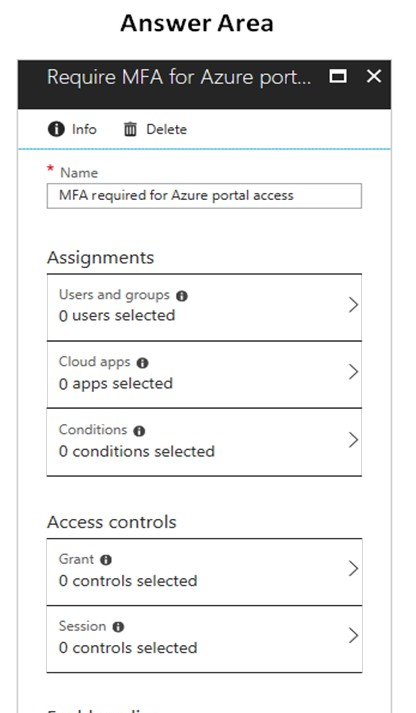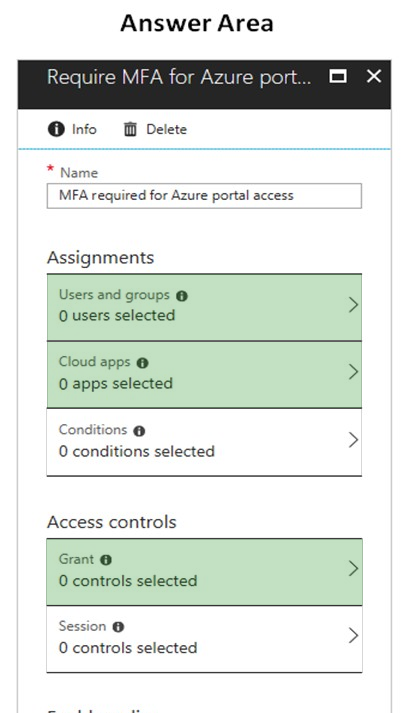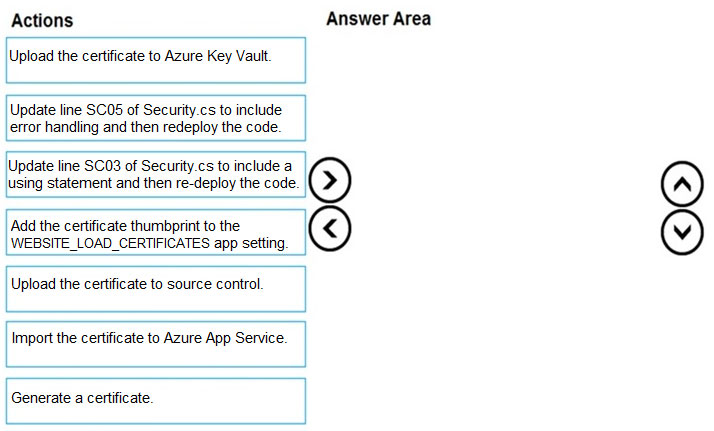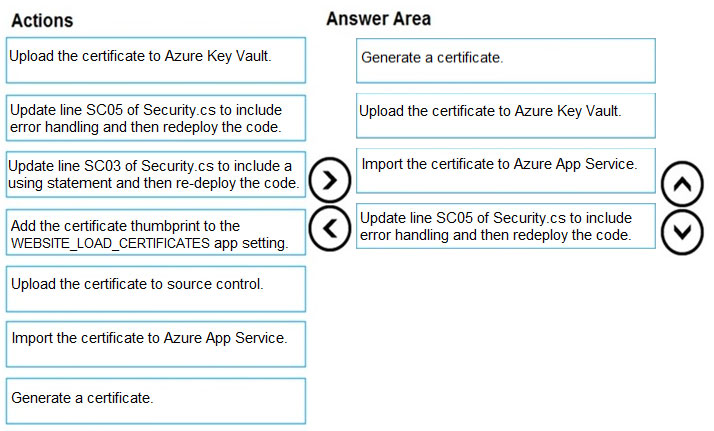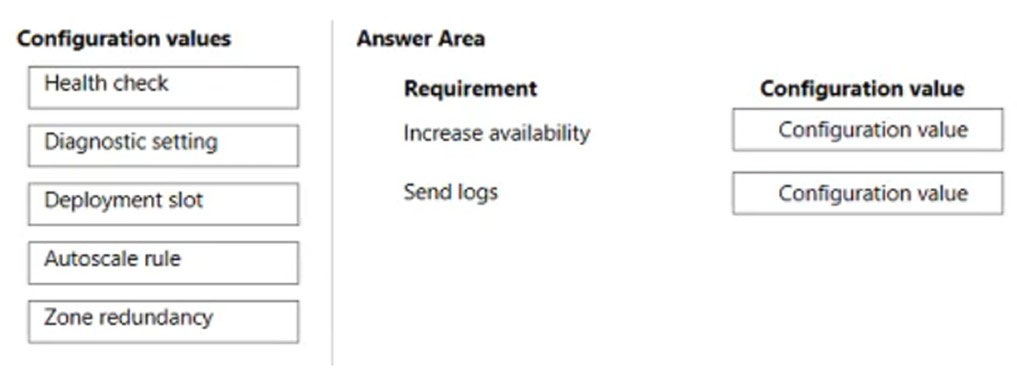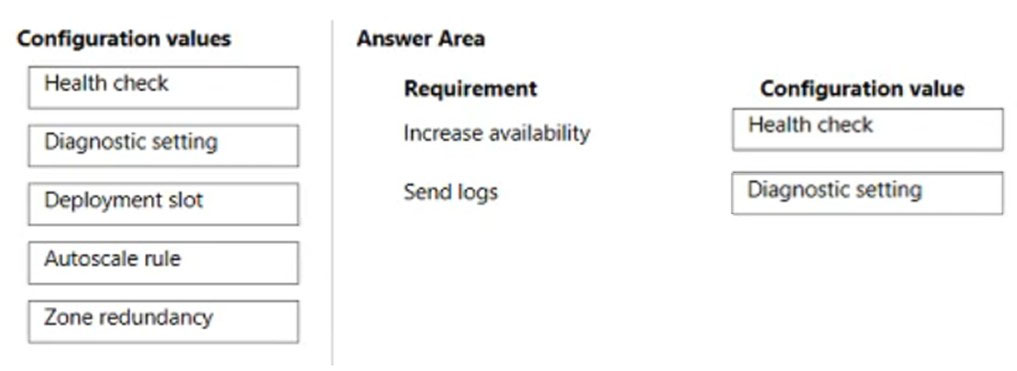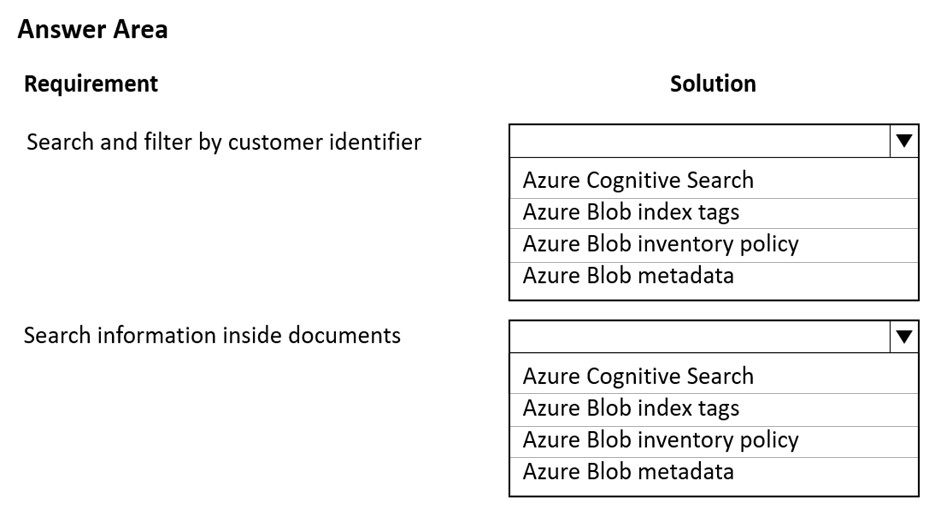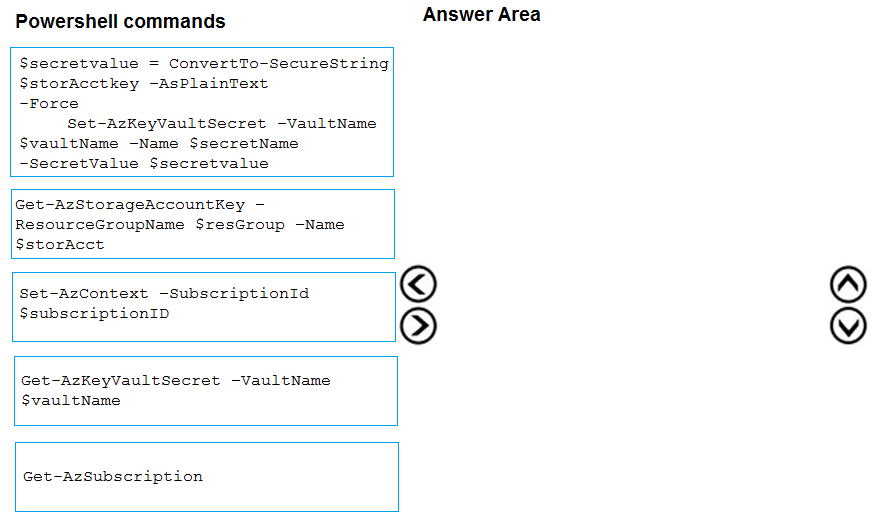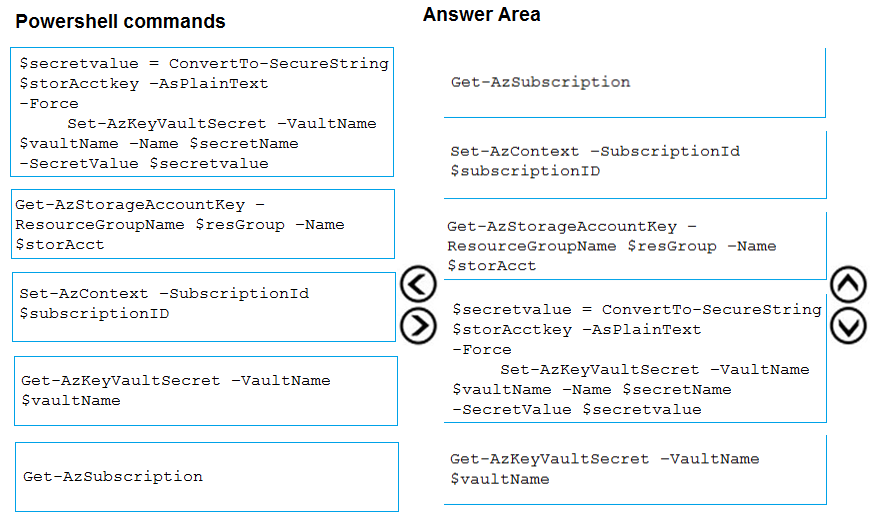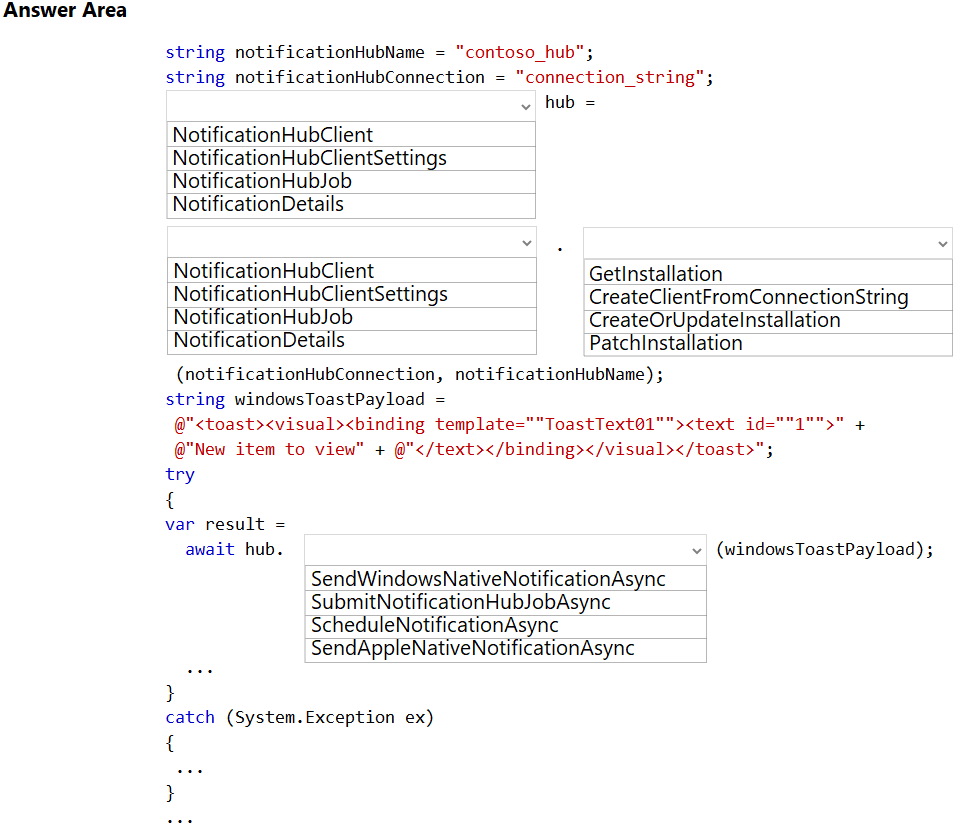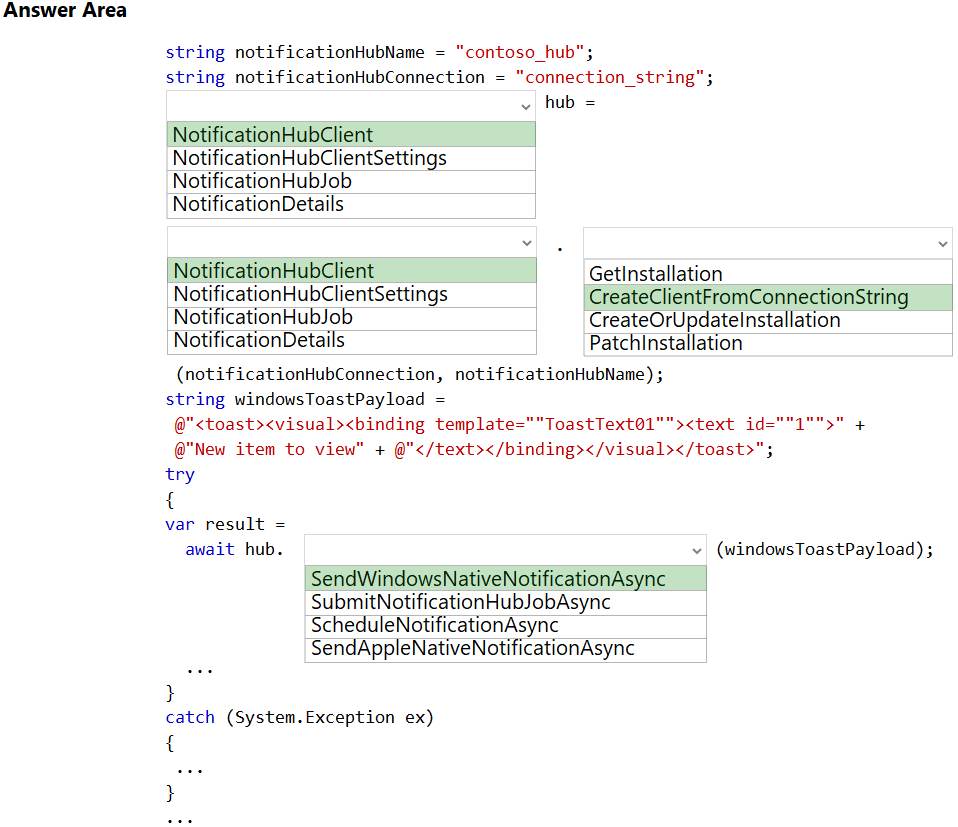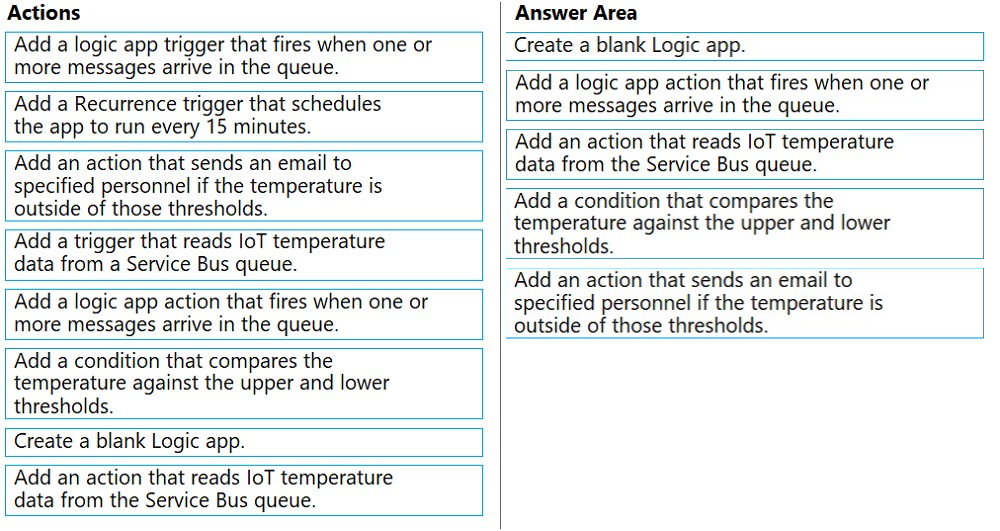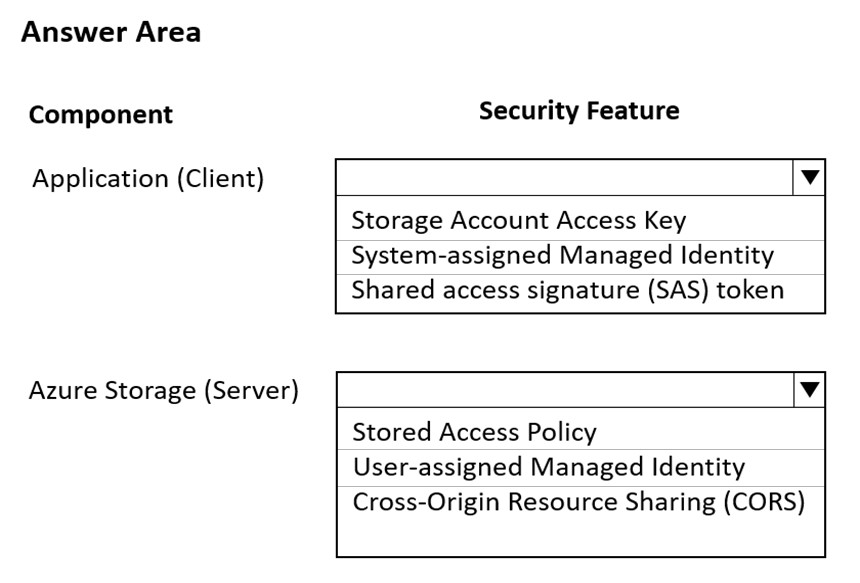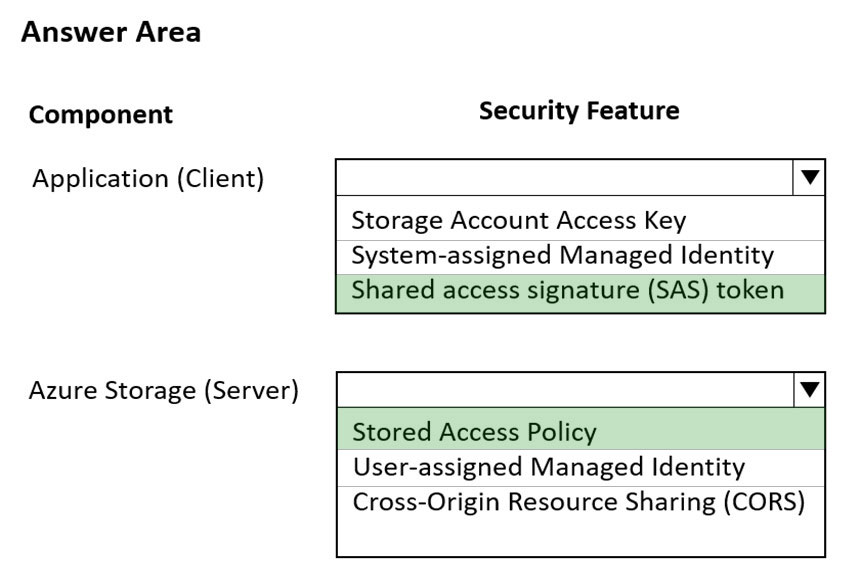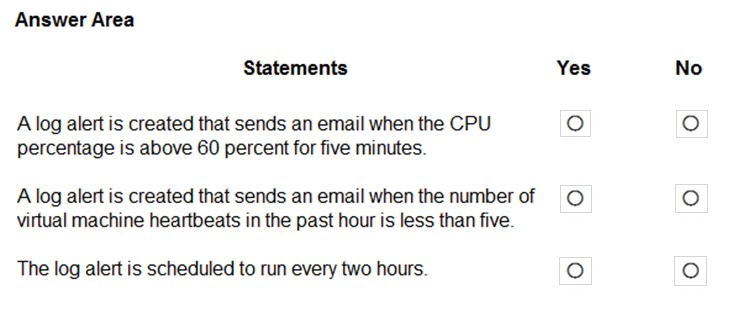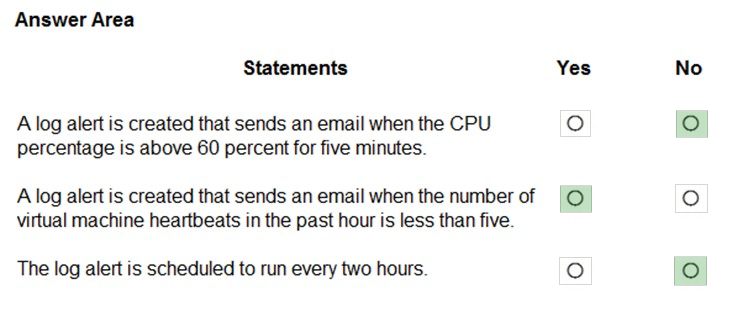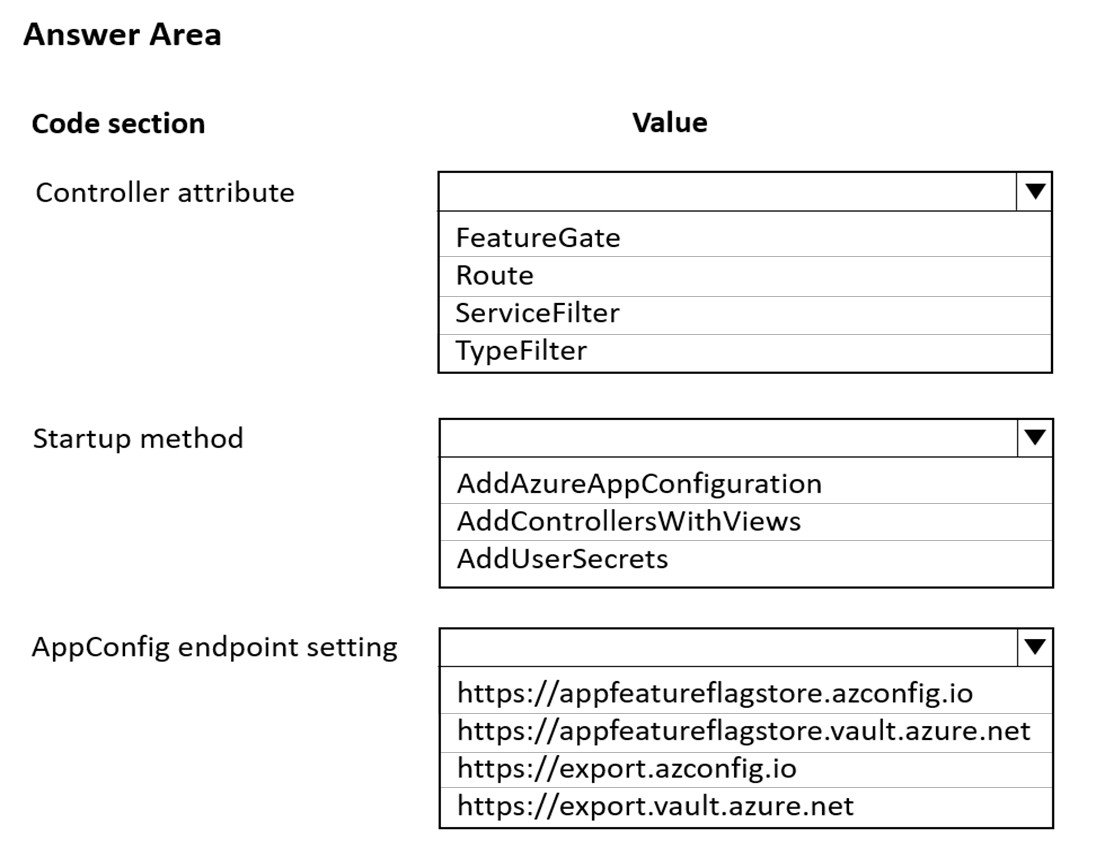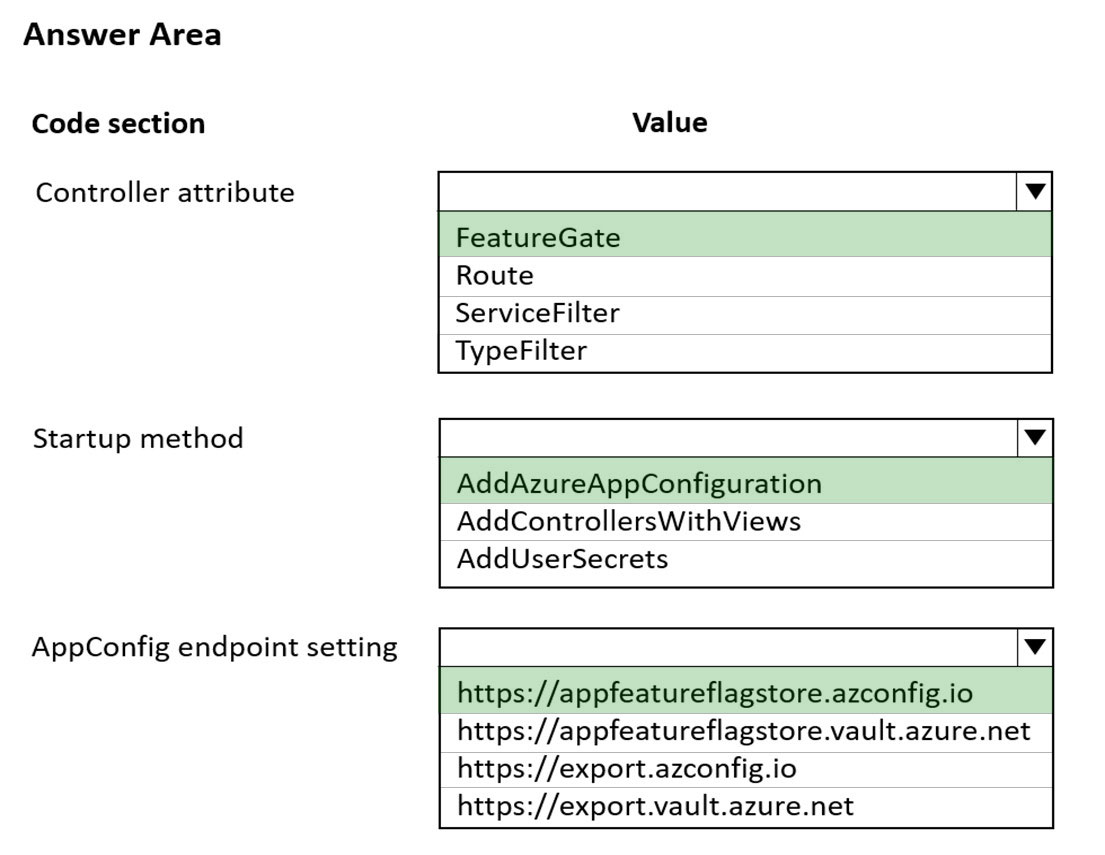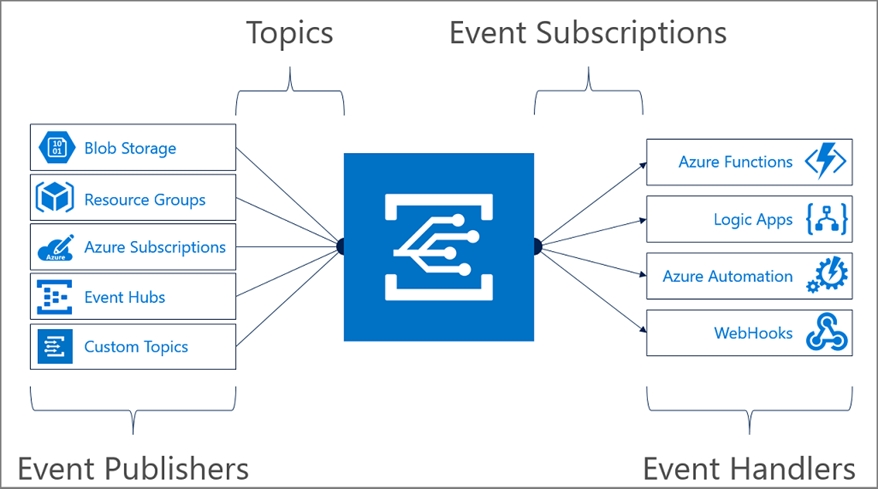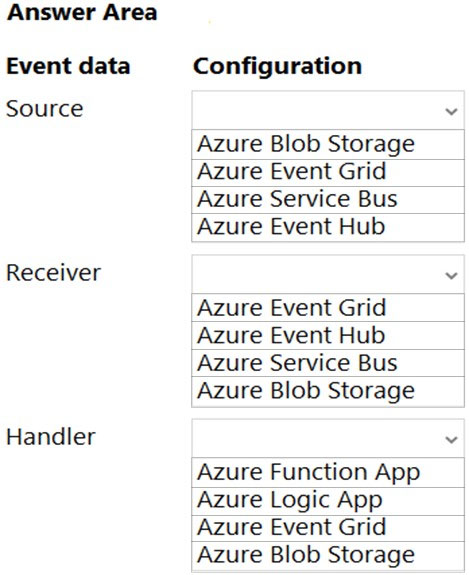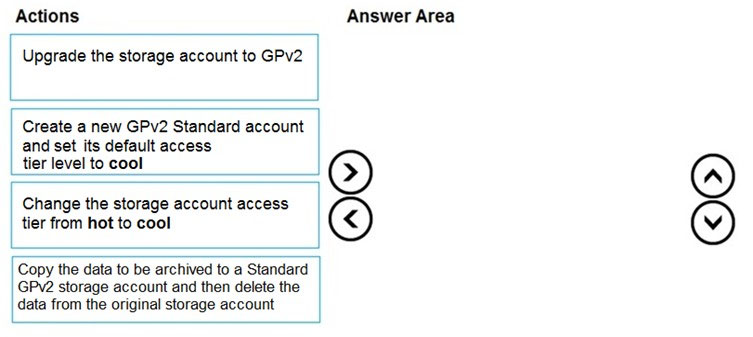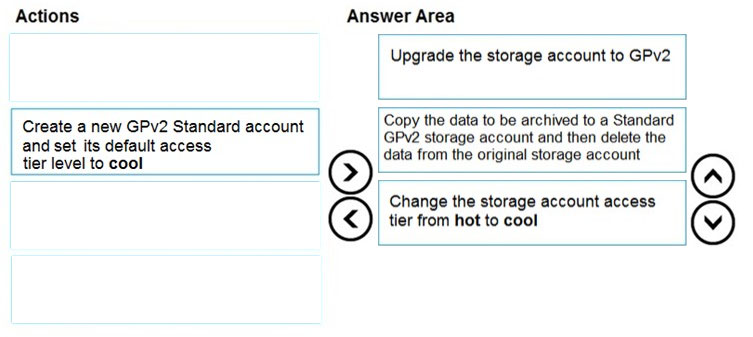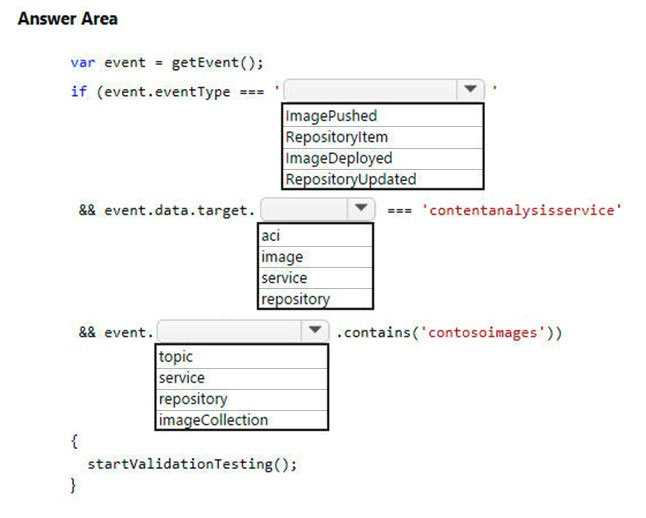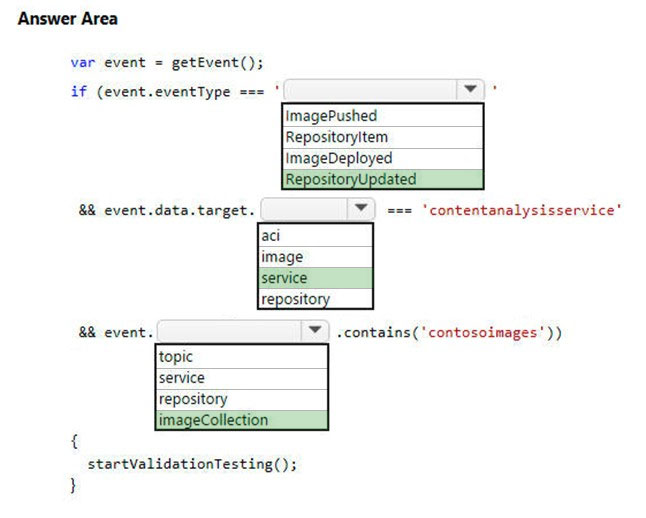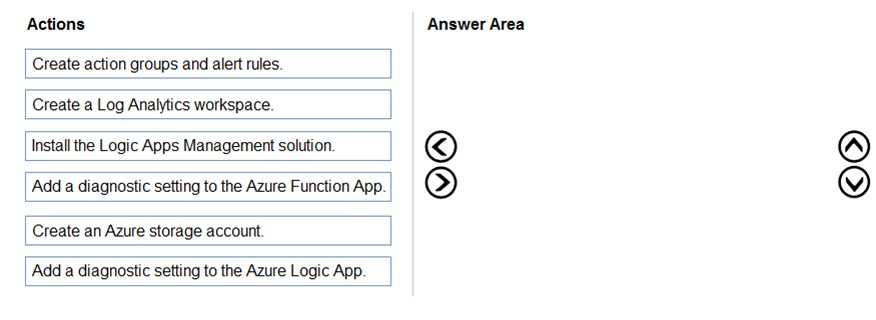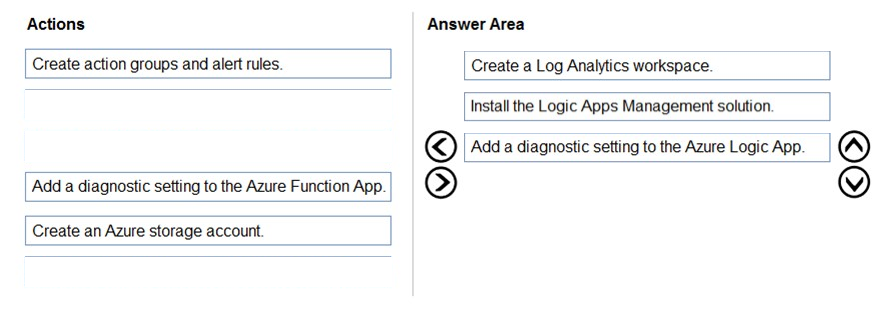AZ-204 Dump Free – 50 Practice Questions to Sharpen Your Exam Readiness.
Looking for a reliable way to prepare for your AZ-204 certification? Our AZ-204 Dump Free includes 50 exam-style practice questions designed to reflect real test scenarios—helping you study smarter and pass with confidence.
Using an AZ-204 dump free set of questions can give you an edge in your exam prep by helping you:
- Understand the format and types of questions you’ll face
- Pinpoint weak areas and focus your study efforts
- Boost your confidence with realistic question practice
Below, you will find 50 free questions from our AZ-204 Dump Free collection. These cover key topics and are structured to simulate the difficulty level of the real exam, making them a valuable tool for review or final prep.
HOTSPOT - You have an Azure Active Directory (Azure AD) tenant. You want to implement multi-factor authentication by making use of a conditional access policy. The conditional access policy must be applied to all users when they access the Azure portal. Which three settings should you configure? To answer, select the appropriate settings in the answer area. NOTE: Each correct selection is worth one point. Hot Area:
After you answer a question in this section, you will NOT be able to return to it. As a result, these questions will not appear in the review screen. You deploy an Azure Container Apps app and disable ingress on the container app. Users report that they are unable to access the container app. You investigate and observe that the app has scaled to 0 instances. You need to resolve the issue with the container app. Solution: Enable ingress and configure the minimum replicas to 1 for the container app. Does the solution meet the goal?
A. Yes
B. No
After you answer a question in this section, you will NOT be able to return to it. As a result, these questions will not appear in the review screen. You are developing a medical records document management website. The website is used to store scanned copies of patient intake forms. If the stored intake forms are downloaded from storage by a third party, the contents of the forms must not be compromised. You need to store the intake forms according to the requirements. Solution: Store the intake forms as Azure Key Vault secrets. Does the solution meet the goal?
A. Yes
B. No
You create and publish a new Azure App Service web app. User authentication and authorization must use Azure Active Directory (Azure AD). You need to configure authentication and authorization. What should you do first?
A. Add an identity provider.
B. Map an existing custom DNS name.
C. Create and configure a new app setting.
D. Add a private certificate.
E. Create and configure a managed identity.
HOTSPOT - An organization deploys a blob storage account. Users take multiple snapshots of the blob storage account over time. You need to delete all snapshots of the blob storage account. You must not delete the blob storage account itself. How should you complete the code segment? To answer, select the appropriate options in the answer area. NOTE: Each correct selection is worth one point. Hot Area:
After you answer a question in this section, you will NOT be able to return to it. As a result, these questions will not appear in the review screen. You are developing an Azure solution to collect point-of-sale (POS) device data from 2,000 stores located throughout the world. A single device can produce 2 megabytes (MB) of data every 24 hours. Each store location has one to five devices that send data. You must store the device data in Azure Blob storage. Device data must be correlated based on a device identifier. Additional stores are expected to open in the future. You need to implement a solution to receive the device data. Solution: Provision an Azure Event Grid. Configure the machine identifier as the partition key and enable capture. Does the solution meet the goal?
A. Yes
B. No
You are developing a web application that uses Azure Cache for Redis. You anticipate that the cache will frequently fill and that you will need to evict keys. You must configure Azure Cache for Redis based on the following predicted usage pattern: A small subset of elements will be accessed much more often than the rest. You need to configure the Azure Cache for Redis to optimize performance for the predicted usage pattern. Which two eviction policies will achieve the goal? NOTE: Each correct selection is worth one point.
A. noeviction
B. allkeys-lru
C. volatile-lru
D. allkeys-random
E. volatile-ttl
F. volatile-random
DRAG DROP - You need to correct the corporate website error. Which four actions should you recommend be performed in sequence? To answer, move the appropriate actions from the list of actions to the answer area and arrange them in the correct order. Select and Place:
DRAG DROP - You are a developer for a Software as a Service (SaaS) company. You develop solutions that provide the ability to send notifications by using Azure Notification Hubs. You need to create sample code that customers can use as a reference for how to send raw notifications to Windows Push Notification Services (WNS) devices. The sample code must not use external packages. How should you complete the code segment? To answer, drag the appropriate code segments to the correct locations. Each code segment may be used once, more than once, or not at all. You may need to drag the split bar between panes or scroll to view content. NOTE: Each correct selection is worth one point. Select and Place:
You need to deploy the CheckUserContent Azure Function. The solution must meet the security and cost requirements. Which hosting model should you use?
A. Premium plan
B. App Service plan
C. Consumption plan
You are developing a solution that will use Azure messaging services. You need to ensure that the solution uses a publish-subscribe model and eliminates the need for constant polling. What are two possible ways to achieve the goal? Each correct answer presents a complete solution. NOTE: Each correct selection is worth one point.
A. Service Bus
B. Event Hub
C. Event Grid
D. Queue
You have a new Azure subscription. You are developing an internal website for employees to view sensitive data. The website uses Azure Active Directory (Azure AD) for authentication. You need to implement multifactor authentication for the website. Which two actions should you perform? Each correct answer presents part of the solution. NOTE: Each correct selection is worth one point.
A. Configure the website to use Azure AD B2C.
B. In Azure AD, create a new conditional access policy.
C. Upgrade to Azure AD Premium.
D. In Azure AD, enable application proxy.
E. In Azure AD conditional access, enable the baseline policy.
You are building a loyalty program for a major snack producer. When customers buy a snack at any of 100 participating retailers the event is recorded in Azure Event Hub. Each retailer is given a unique identifier that is used as the primary identifier for the loyalty program. Retailers must be able to be added or removed at any time. Retailers must only be able to record sales for themselves. You need to ensure that retailers can record sales. What should you do?
A. Use publisher policies for retailers.
B. Create a partition for each retailer.
C. Define a namespace for each retailer.
DRAG DROP - You develop and deploy a web app to Azure App Service in a production environment. You scale out the web app to four instances and configure a staging slot to support changes. You must monitor the web app in the environment to include the following requirements: ✑ Increase web app availability by re-routing requests away from instances with error status codes and automatically replace instances if they remain in an error state after one hour. ✑ Send web server logs, application logs, standard output, and standard error messaging to an Azure Storage blob account. You need to configure Azure App Service. Which values should you use? To answer, drag the appropriate configuration value to the correct requirements. Each configuration value may be used once, more than once, or not at all. You may need to drag the split bar between panes or scroll to view content. NOTE: Each correct selection is worth one point. Select and Place:
DRAG DROP - You need to ensure that PolicyLib requirements are met. How should you complete the code segment? To answer, drag the appropriate code segments to the correct locations. Each code segment may be used once, more than once, or not at all. You may need to drag the split bar between panes or scroll to view content. NOTE: Each correct selection is worth one point. Select and Place:
HOTSPOT - You are developing a solution to store documents in Azure Blob storage. Customers upload documents to multiple containers. Documents consist of PDF, CSV, Microsoft Office format and plain text files. The solution must process millions of documents across hundreds of containers. The solution must meet the following requirements: ✑ Documents must be categorized by a customer identifier as they are uploaded to the storage account. ✑ Allow filtering by the customer identifier. ✑ Allow searching of information contained within a document ✑ Minimize costs. You create and configure a standard general-purpose v2 storage account to support the solution. You need to implement the solution. What should you implement? To answer, select the appropriate options in the answer area. NOTE: Each correct selection is worth one point. Hot Area:
You need to secure the Azure Functions to meet the security requirements. Which two actions should you perform? Each correct answer presents part of the solution. NOTE: Each correct selection is worth one point.
A. Store the RSA-HSM key in Azure Key Vault with soft-delete and purge-protection features enabled.
B. Store the RSA-HSM key in Azure Blob storage with an immutability policy applied to the container.
C. Create a free tier Azure App Configuration instance with a new Azure AD service principal.
D. Create a standard tier Azure App Configuration instance with an assigned Azure AD managed identity.
E. Store the RSA-HSM key in Azure Cosmos DB. Apply the built-in policies for customer-managed keys and allowed locations.
You develop and deploy an Azure App Service web app named App1. You create a new Azure Key Vault named Vault1. You import several API keys, passwords, certificates, and cryptographic keys into Vault1. You need to grant App1 access to Vault1 and automatically rotate credentials. Credentials must not be stored in code. What should you do?
A. Enable App Service authentication for Appl. Assign a custom RBAC role to Vault1.
B. Add a TLS/SSL binding to App1.
C. Upload a self-signed client certificate to Vault1. Update App1 to use the client certificate.
D. Assign a managed identity to App1.
After you answer a question in this section, you will NOT be able to return to it. As a result, these questions will not appear in the review screen. You are developing an Azure solution to collect point-of-sale (POS) device data from 2,000 stores located throughout the world. A single device can produce 2 megabytes (MB) of data every 24 hours. Each store location has one to five devices that send data. You must store the device data in Azure Blob storage. Device data must be correlated based on a device identifier. Additional stores are expected to open in the future. You need to implement a solution to receive the device data. Solution: Provision an Azure Notification Hub. Register all devices with the hub. Does the solution meet the goal?
A. Yes
B. No
You are developing several microservices to run on Azure Container Apps. External HTTP ingress traffic has been enabled for the microservices. The microservices must be deployed to the same virtual network and write logs to the same Log Analytics workspace. You need to deploy the microservices. What should you do?
A. Enable single revision mode.
B. Use a separate environment for each container.
C. Use a private container registry image and single image for all containers.
D. Use a single environment for all containers.
E. Enable multiple revision mode.
You are developing an e-commerce solution that uses a microservice architecture. You need to design a communication backplane for communicating transactional messages between various parts of the solution. Messages must be communicated in first-in-first-out (FIFO) order. What should you use?
A. Azure Storage Queue
B. Azure Event Hub
C. Azure Service Bus
D. Azure Event Grid
HOTSPOT - You are developing an online game that allows players to vote for their favorite photo that illustrates a word. The game is built by using Azure Functions and uses durable entities to track the vote count. The voting window is 30 seconds. You must minimize latency. You need to implement the Azure Function for voting. How should you complete the code? To answer, select the appropriate options in the answer area.
After you answer a question in this section, you will NOT be able to return to it. As a result, these questions will not appear in the review screen. You are developing an Azure Service application that processes queue data when it receives a message from a mobile application. Messages may not be sent to the service consistently. You have the following requirements: ✑ Queue size must not grow larger than 80 gigabytes (GB). ✑ Use first-in-first-out (FIFO) ordering of messages. ✑ Minimize Azure costs. You need to implement the messaging solution. Solution: Use the .Net API to add a message to an Azure Storage Queue from the mobile application. Create an Azure Function App that uses an Azure Storage Queue trigger. Does the solution meet the goal?
A. Yes
B. No
HOTSPOT - You develop several Azure Functions app functions to process JSON documents from a third-party system. The third-party system publishes events to Azure Event Grid to include hundreds of event types, such as billing, inventory, and shipping updates. Events must be sent to a single endpoint for the Azure Functions app to process. The events must be filtered by event type before processing. You must have authorization and authentication control to partition your tenants to receive the event data. You need to configure Azure Event Grid. Which configuration should you use? To answer, select the appropriate values in the answer area. NOTE: Each correct selection is worth one point.
DRAG DROP - An organization plans to deploy Azure storage services. You need to configure shared access signature (SAS) for granting access to Azure Storage. Which SAS types should you use? To answer, drag the appropriate SAS types to the correct requirements. Each SAS type may be used once, more than once, or not at all. You may need to drag the split bar between panes or scroll to view content. NOTE: Each correct selection is worth one point. Select and Place:
HOTSPOT - You are developing an Azure Function App named App1. You also plan to use cross-origin requests (CORS). You have the following requirements: • App1 functions must securely access an Azure Blob Storage account. • Access to the Azure Blob Storage account must not require the provisioning or rotation of secrets. • JavaScript code running in a browser on an external host must not be allowed to interact with the function. You need to implement App1. Which configuration should you use? To answer, select the appropriate options in the answer area. NOTE: Each correct selection is worth one point.
You are developing a solution for a public facing API. The API back end is hosted in an Azure App Service instance. You have implemented a RESTful service for the API back end. You must configure back-end authentication for the API Management service instance. Solution: You configure Basic gateway credentials for the HTTP(s) endpoint. Does the solution meet the goal?
A. Yes
B. No
DRAG DROP - You are developing an application. You have an Azure user account that has access to two subscriptions. You need to retrieve a storage account key secret from Azure Key Vault. In which order should you arrange the PowerShell commands to develop the solution? To answer, move all commands from the list of commands to the answer area and arrange them in the correct order. Select and Place:
HOTSPOT - You develop a news and blog content app for Windows devices. A notification must arrive on a user's device when there is a new article available for them to view. You need to implement push notifications. How should you complete the code segment? To answer, select the appropriate options in the answer area. NOTE: Each correct selection is worth one point. Hot Area:
DRAG DROP - A company has multiple warehouses. Each warehouse contains IoT temperature devices which deliver temperature data to an Azure Service Bus queue. You need to send email alerts to facility supervisors immediately if the temperature at a warehouse goes above or below specified threshold temperatures. Which five actions should you perform in sequence? To answer, move the appropriate actions from the list of actions to the answer area and arrange them in the correct order. Select and Place:
A company is developing a solution that allows smart refrigerators to send temperature information to a central location. The solution must receive and store messages until they can be processed. You create an Azure Service Bus instance by providing a name, pricing tier, subscription, resource group, and location. You need to complete the configuration. Which Azure CLI or PowerShell command should you run? A.B.
C.
D.
HOTSPOT - You are developing an application to store and retrieve data in Azure Blob storage. The application will be hosted in an on-premises virtual machine (VM). The VM is connected to Azure by using a Site-to-Site VPN gateway connection. The application is secured by using Azure Active Directory (Azure AD) credentials. The application must be granted access to the Azure Blob storage account with a start time, expiry time, and read permissions. The Azure Blob storage account access must use the Azure AD credentials of the application to secure data access. Data access must be able to be revoked if the client application security is breached. You need to secure the application access to Azure Blob storage. Which security features should you use? To answer select the appropriate options in the answer area. NOTE: Each correct selection is worth one point. Hot Area:
HOTSPOT - You have an Azure Web app that uses Cosmos DB as a data store. You create a CosmosDB container by running the following PowerShell script: $resourceGroupName = "testResourceGroup" $accountName = "testCosmosAccount" $databaseName = "testDatabase" $containerName = "testContainer" $partitionKeyPath = "/EmployeeId" $autoscaleMaxThroughput = 5000 New-AzCosmosDBSqlContainer - -ResourceGroupName $resourceGroupName -AccountName $accountName -DatabaseName $databaseName -Name $containerName -PartitionKeyKind Hash -PartitionKeyPath $partitionKeyPath -AutoscaleMaxThroughput $autoscaleMaxThroughput You create the following queries that target the container: SELECT * FROM c WHERE c.EmployeeId > '12345' SELECT * FROM c WHERE c.UserID = '12345' For each of the following statements, select Yes if the statement is true. Otherwise, select No. NOTE: Each correct selection is worth one point. Hot Area:
HOTSPOT - You are developing a solution that uses several Azure Service Bus queues. You create an Azure Event Grid subscription for the Azure Service Bus namespace. You use Azure Functions as subscribers to process the messages. You need to emit events to Azure Event Grid from the queues. You must use the principal of least privilege and minimize costs. Which Azure Service Bus values should you use? To answer, select the appropriate options in the answer area. NOTE: Each correct selection is worth one point.
You develop Azure solutions. You must connect to a No-SQL globally-distributed database by using the .NET API. You need to create an object to configure and execute requests in the database. Which code segment should you use?
A. database_name = ‘MyDatabase’database = client.create_database_if_not_exists(id=database_name)
B. client = CosmosClient(endpoint, key)
C. container_name = ‘MyContainer’container = database.create_container_if_not_exists(id=container_name, partition_key=PartitionKey(path=”/lastName”), offer_throughput=400 )
HOTSPOT - You create the following PowerShell script:For each of the following statements, select Yes if the statement is true. Otherwise, select No. NOTE: Each correct selection is worth one point. Hot Area:
You are developing an Azure messaging solution. You need to ensure that the solution meets the following requirements: ✑ Provide transactional support. ✑ Provide duplicate detection. ✑ Store the messages for an unlimited period of time. Which two technologies will meet the requirements? Each correct answer presents a complete solution. NOTE: Each correct selection is worth one point.
A. Azure Service Bus Topic
B. Azure Service Bus Queue
C. Azure Storage Queue
D. Azure Event Hub
HOTSPOT - You are developing an ASP.NET Core app that includes feature flags which are managed by Azure App Configuration. You create an Azure App Configuration store named AppFeatureflagStore as shown in the exhibit:You must be able to use the feature in the app by using the following markup:
You need to update the app to use the feature flag. Which values should you use? To answer, select the appropriate options in the answer area. NOTE: Each correct selection is worth one point. Hot Area:
HOTSPOT - You provisioned an Azure Cosmos DB for NoSQL account named account1 with the default consistency level. You plan to configure the consistency level on a per request basis. The level needs to be set for consistent prefix for read and write operations to account1. You need to identify the resulting consistency level for read and write operations. Which levels should you configure? To answer, select the appropriate options in the answer area. NOTE: Each correct selection is worth one point.
You develop and deploy an ASP.NET Core application that connects to an Azure Database for MySQL instance. Connections to the database appear to drop intermittently and the application code does not handle the connection failure. You need to handle the transient connection errors in code by implementing retries. What are three possible ways to achieve this goal? Each correct answer presents part of the solution. NOTE: Each correct selection is worth one point.
A. Close the database connection and immediately report an error.
B. Disable connection pooling and configure a second Azure Database for MySQL instance.
C. Wait five seconds before repeating the connection attempt to the database.
D. Set a maximum number of connection attempts to 10 and report an error on subsequent connections.
E. Increase connection repeat attempts exponentially up to 120 seconds.
DRAG DROP - You are developing an Azure solution to collect inventory data from thousands of stores located around the world. Each store location will send the inventory data hourly to an Azure Blob storage account for processing. The solution must meet the following requirements: ✑ Begin processing when data is saved to Azure Blob storage. ✑ Filter data based on store location information. ✑ Trigger an Azure Logic App to process the data for output to Azure Cosmos DB. ✑ Enable high availability and geographic distribution. ✑ Allow 24-hours for retries. ✑ Implement an exponential back off data processing. You need to configure the solution. What should you implement? To answer, select the appropriate options in the answer area. NOTE: Each correct selection is worth one point. Select and Place:
After you answer a question in this section, you will NOT be able to return to it. As a result, these questions will not appear in the review screen. You develop an HTTP triggered Azure Function app to process Azure Storage blob data. The app is triggered using an output binding on the blob. The app continues to time out after four minutes. The app must process the blob data. You need to ensure the app does not time out and processes the blob data. Solution: Pass the HTTP trigger payload into an Azure Service Bus queue to be processed by a queue trigger function and return an immediate HTTP success response. Does the solution meet the goal?
A. Yes
B. No
A company is developing a solution that allows smart refrigerators to send temperature information to a central location. The solution must receive and store messages until they can be processed. You create an Azure Service Bus instance by providing a name, pricing tier, subscription, resource group, and location. You need to complete the configuration. Which Azure CLI or PowerShell command should you run?
A.

B.

C.

D.

A company is developing a solution that allows smart refrigerators to send temperature information to a central location. The solution must receive and store messages until they can be processed. You create an Azure Service Bus instance by providing a name, pricing tier, subscription, resource group, and location. You need to complete the configuration. Which Azure CLI or PowerShell command should you run?
A.

B.

C.

D.

You need to support the requirements for the Shipping Logic App. What should you use?
A. Azure Active Directory Application Proxy
B. Site-to-Site (S2S) VPN connection
C. On-premises Data Gateway
D. Point-to-Site (P2S) VPN connection
Your company has an Azure Kubernetes Service (AKS) cluster that you manage from an Azure AD-joined device. The cluster is located in a resource group. Developers have created an application named MyApp. MyApp was packaged into a container image. You need to deploy the YAML manifest file for the application. Solution: You install the docker client on the device and run the docker run -it microsoft/azure-cli:0.10.17 command. Does this meet the goal?
A. Yes
B. No
HOTSPOT - You need to implement event routing for retail store location data. Which configurations should you use? To answer, select the appropriate options in the answer area. NOTE: Each correct selection is worth one point. Hot Area:
DRAG DROP - You are maintaining an existing application that uses an Azure Blob GPv1 Premium storage account. Data older than three months is rarely used. Data newer than three months must be available immediately. Data older than a year must be saved but does not need to be available immediately. You need to configure the account to support a lifecycle management rule that moves blob data to archive storage for data not modified in the last year. Which three actions should you perform in sequence? To answer, move the appropriate actions from the list of actions to the answer area and arrange them in the correct order. Select and Place:
HOTSPOT - You need to ensure that validation testing is triggered per the requirements. How should you complete the code segment? To answer, select the appropriate values in the answer area. NOTE: Each correct selection is worth one point. Hot Area:
DRAG DROP - You develop and deploy an Azure Logic App that calls an Azure Function app. The Azure Function App includes an OpenAPI (Swagger) definition and uses an Azure Blob storage account. All resources are secured by using Azure Active Directory (Azure AD). The Logic App must use Azure Monitor logs to record and store information about runtime data and events. The logs must be stored in the Azure Blob storage account. You need to set up Azure Monitor logs and collect diagnostics data for the Azure Logic App. Which three actions should you perform in sequence? To answer, move the appropriate actions from the list of actions to the answer area and arrange them in the correct order. Select and Place:
Access Full AZ-204 Dump Free
Looking for even more practice questions? Click here to access the complete AZ-204 Dump Free collection, offering hundreds of questions across all exam objectives.
We regularly update our content to ensure accuracy and relevance—so be sure to check back for new material.
Begin your certification journey today with our AZ-204 dump free questions — and get one step closer to exam success!


